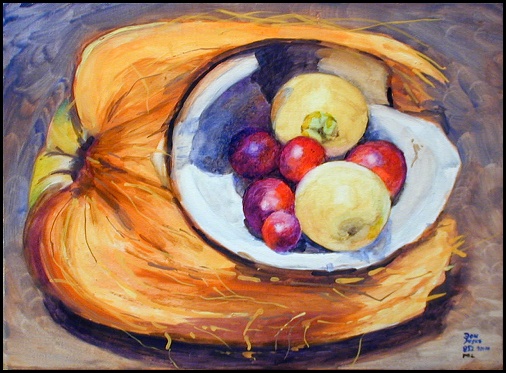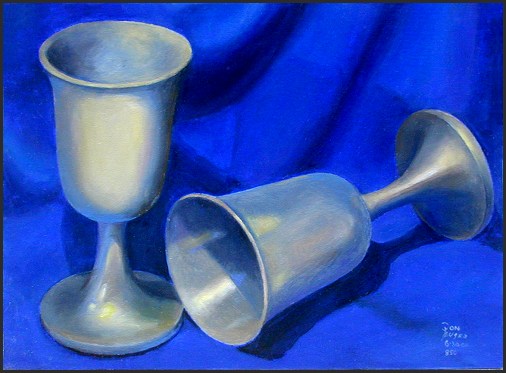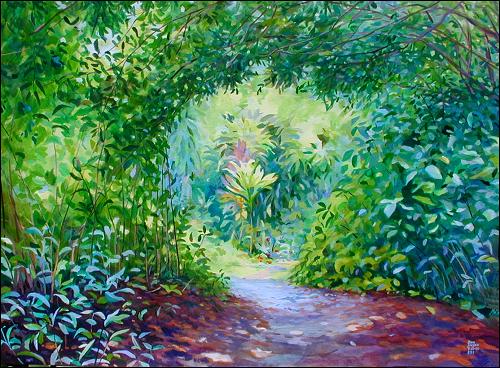|
A guest of Tom's set this up in the kitchen and it really caught my eye.
Seeing it again the next morning I knew I had to paint it and took it to the studio. Although my first sight of it had been in the warm afternoon light and now the studio light was from a stormy looking sky. It just didn't have the power and clarity of the day before, but the arrangement still had me captivated.
Well, there it sat, and sat.. till four o'clock that afternoon when I turned on the French Verilux 150W 150V incandescent light. I still had enough time to do an evening painting and I was rearing to go.
This is a very odd light, the glass bulb has a blue tint to it while off. But by the lit in the studio on an overcast day I could see the bulb light was leaning to the Magenta side, stopping in the Red.
This was a clever move by the French company because in a dark room the Yellow light from the bulb is not neutralized as much as by the Blue ommni studio light of a cloudy day.
At night that leaves the Blue bulb filter intact. Now the dominant Yellow light that was unnoticed in the daytime is overwhelming the earlier perceived Red light. The effect is a light Orange or Bt. Sienna tint of light to paint by. It's a warm tint but not a Yellow tint, more like my perceived warm afternoon light the day before.
Don't cha just love it :). Life's always perfect when your an artist.
Another nice thing about Alkyd, you don't need much of it. 25-30% added to thinner and you're in there. I had to use a lot higher percent of Oil in Oil paintings which yellows more than Alkyds.
If you ever wanted to extend the drying time of Alkyd a drop of linseed oil will do it fine. Me? I use a hair drier with my watercolors and acrylics, I like it fast! | 


